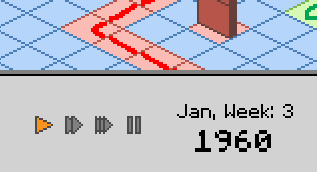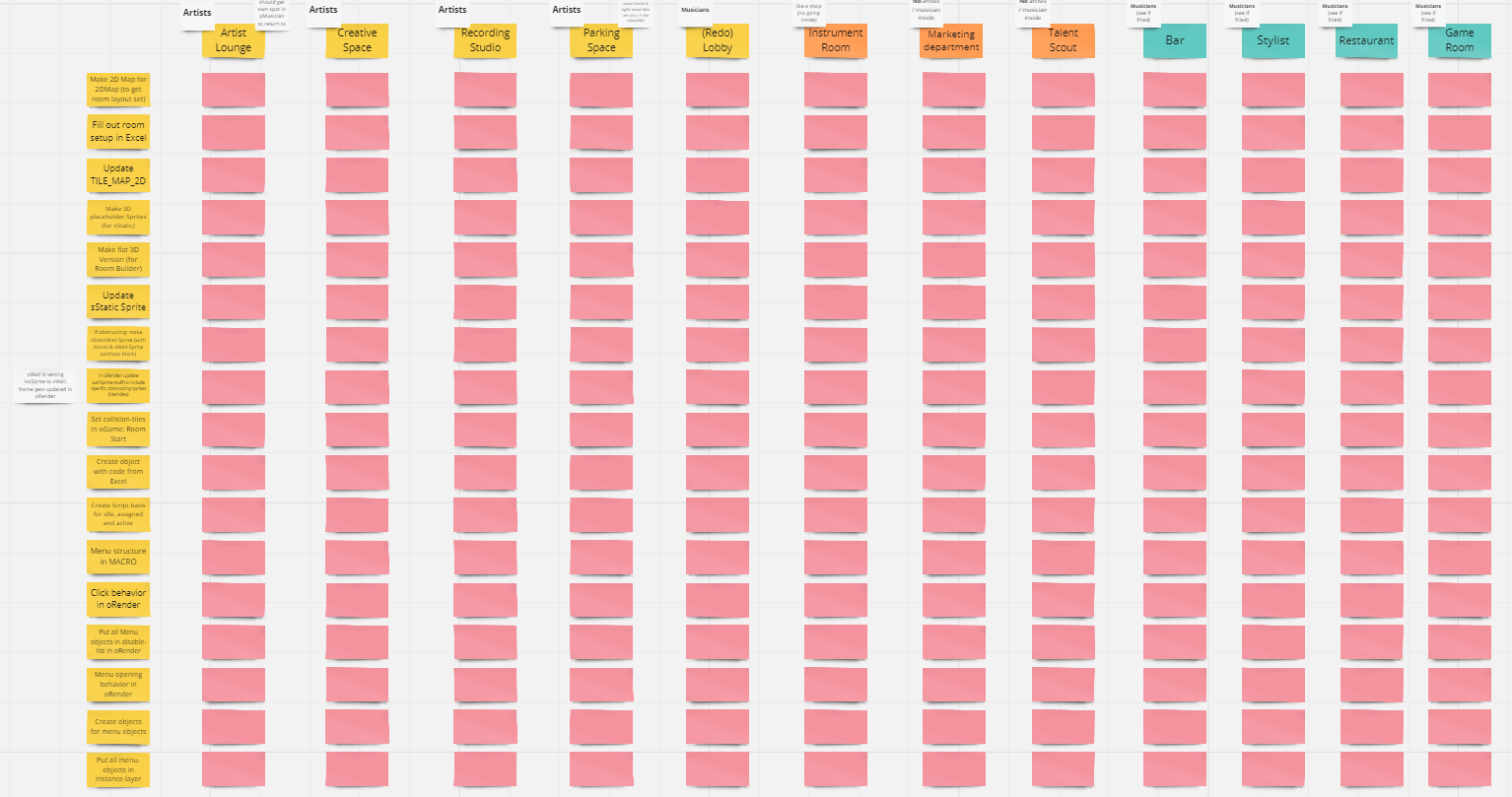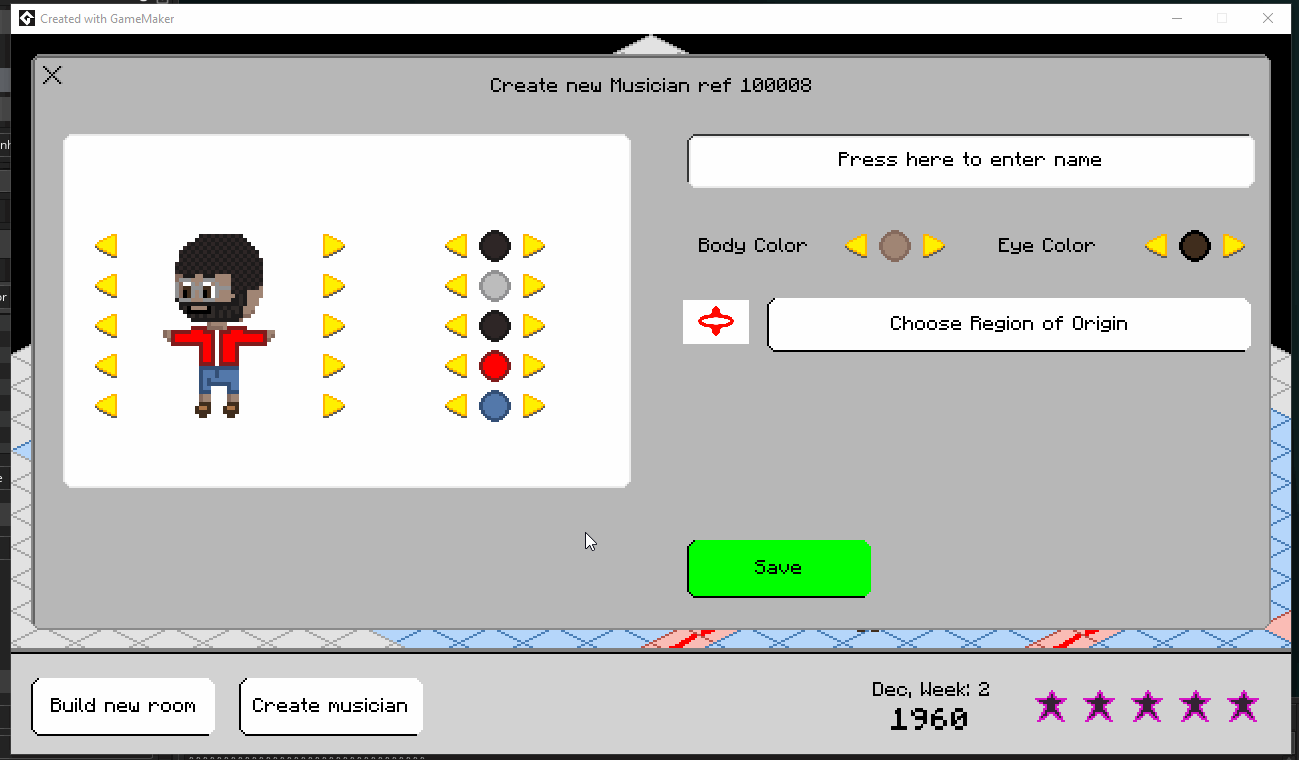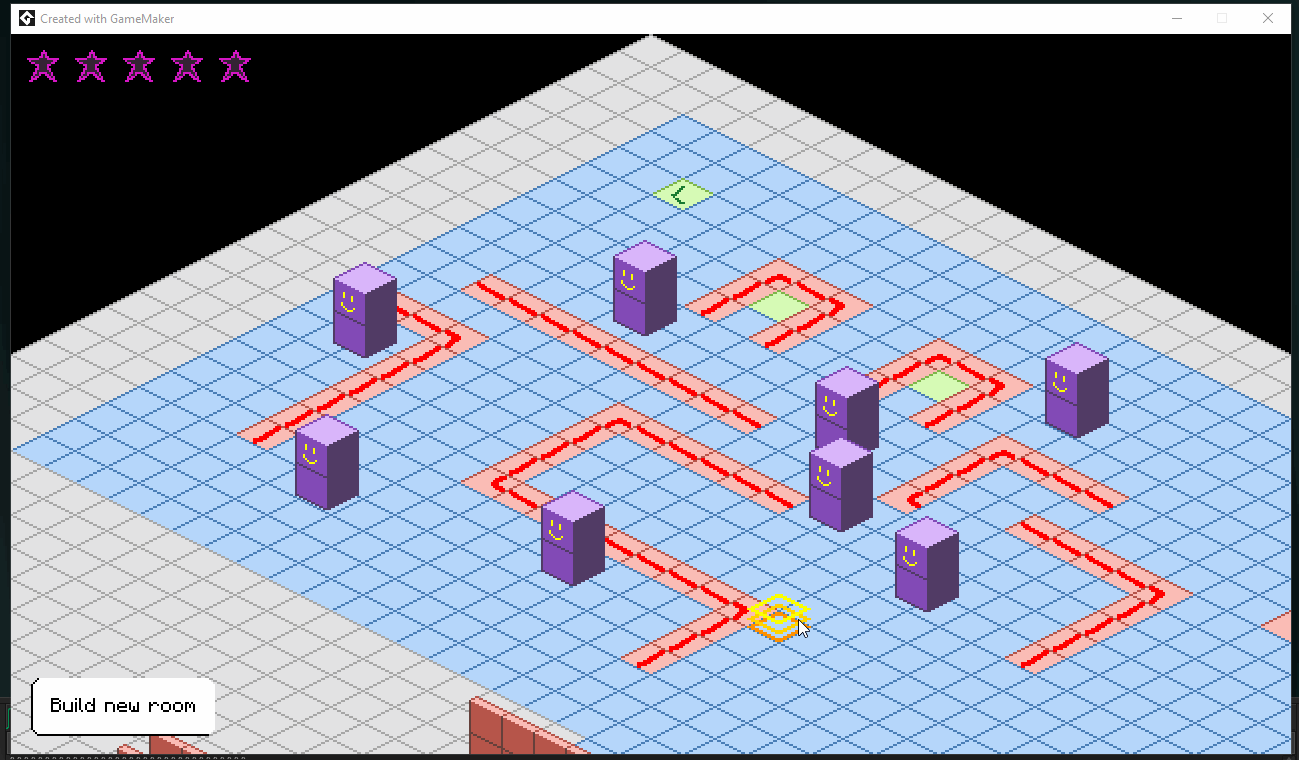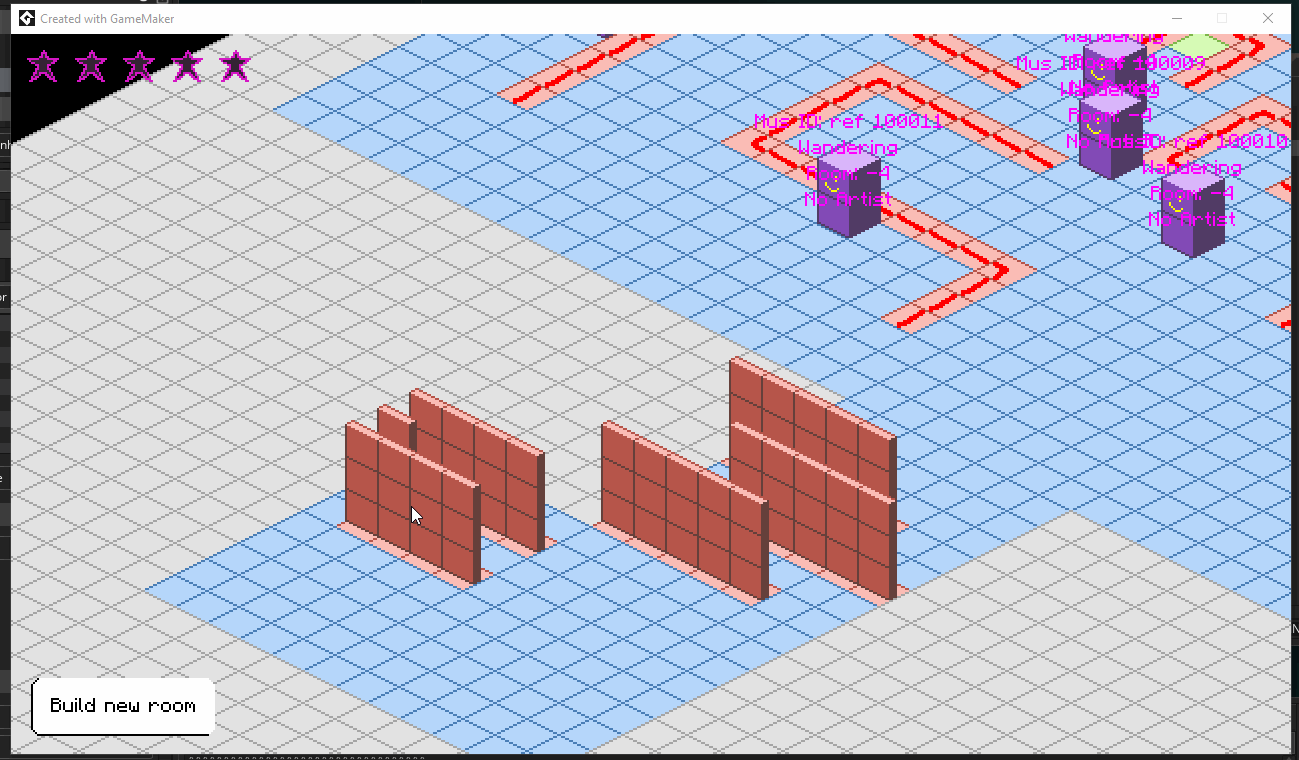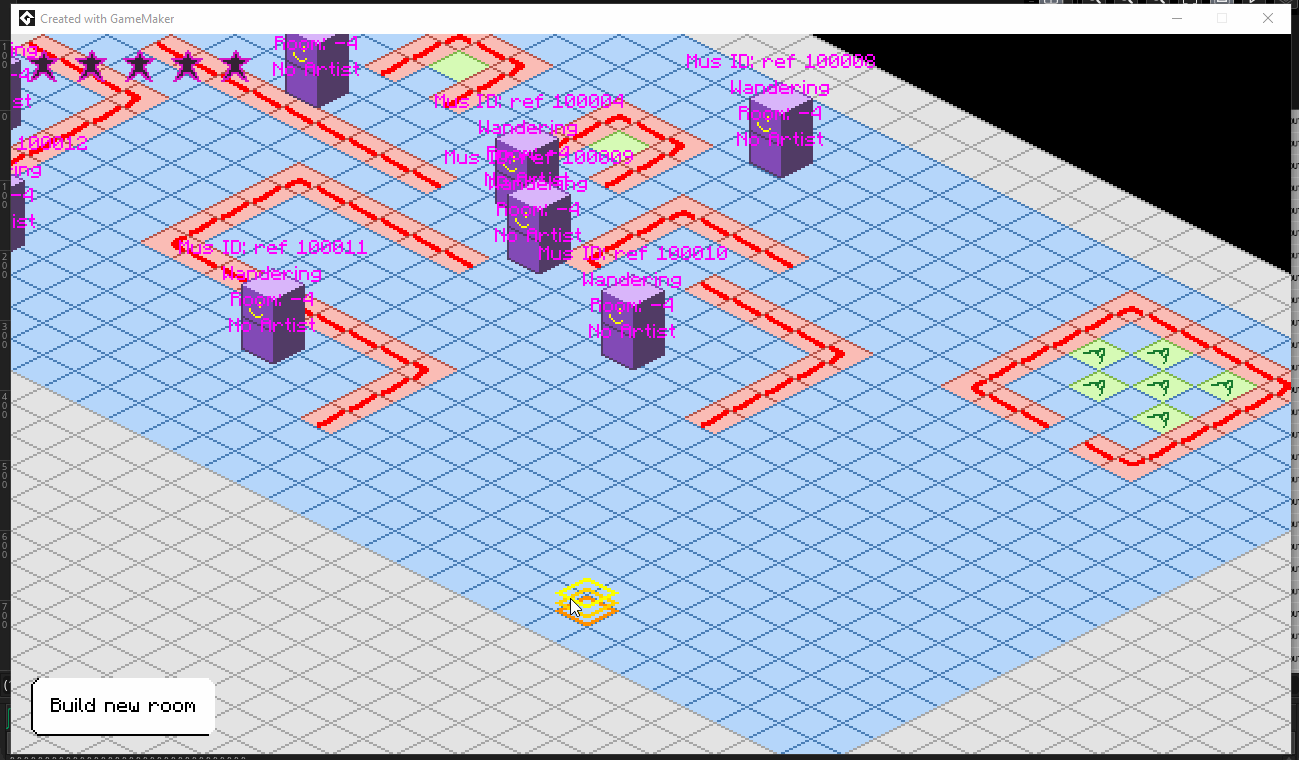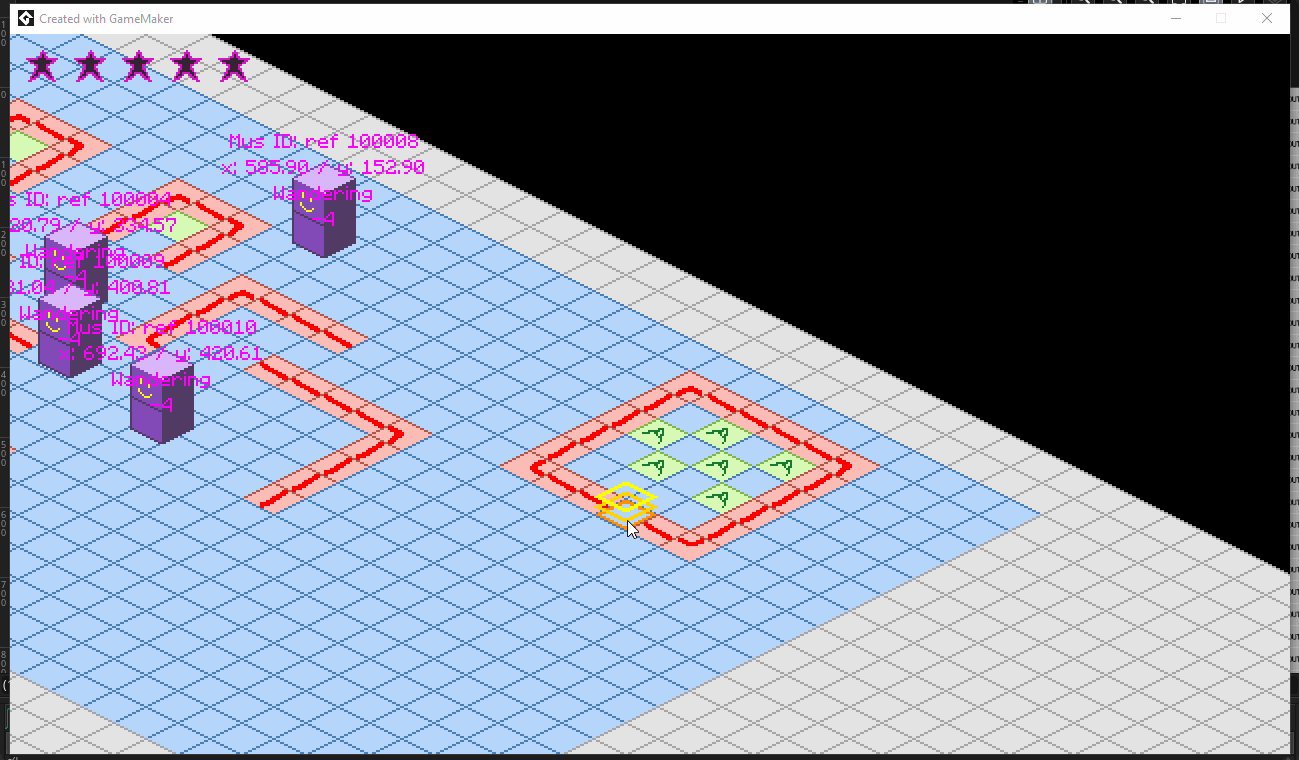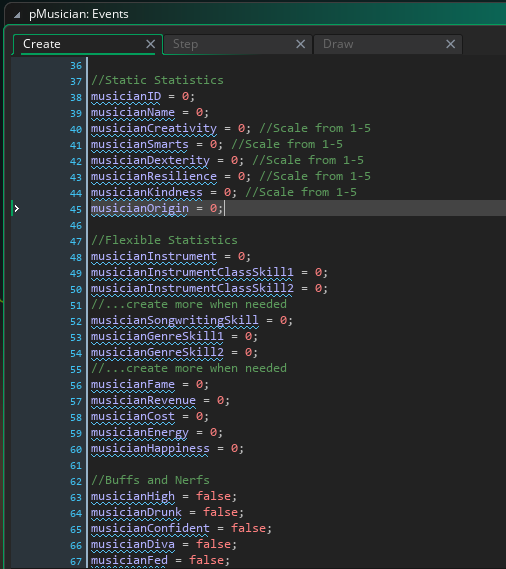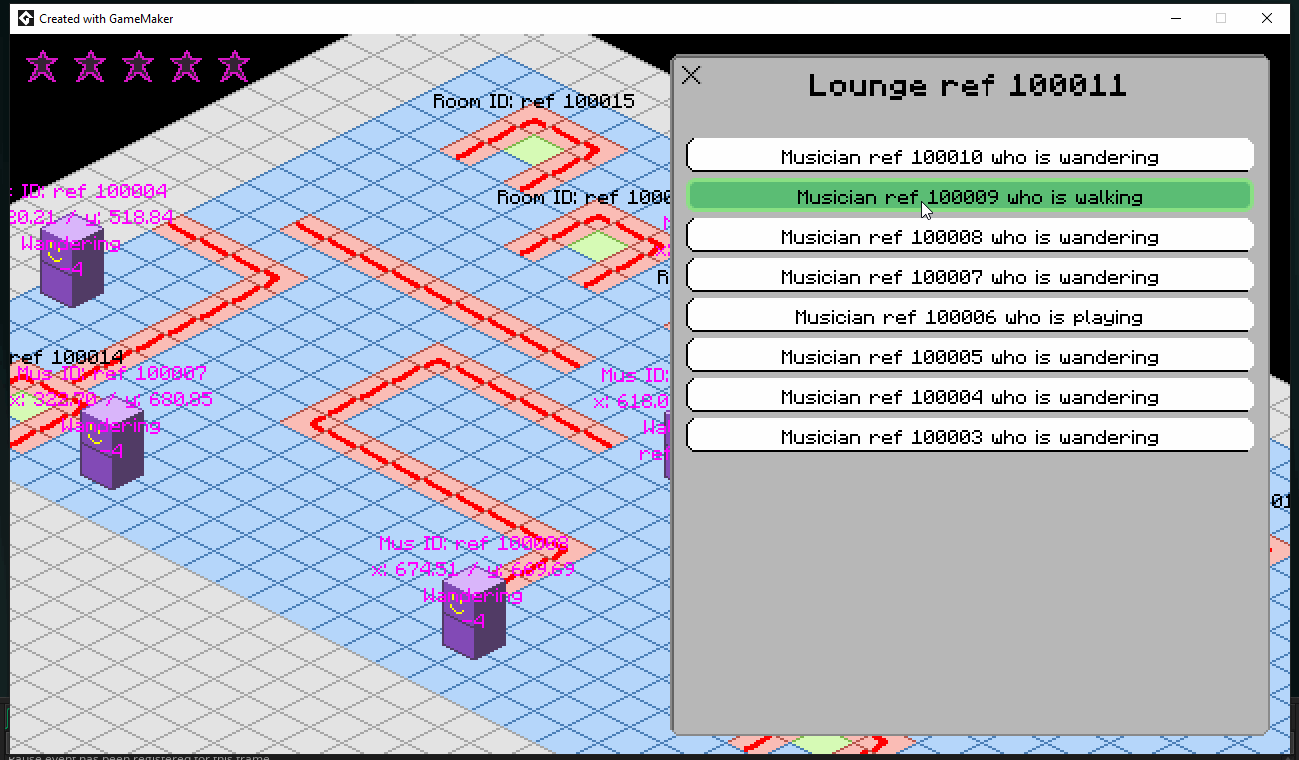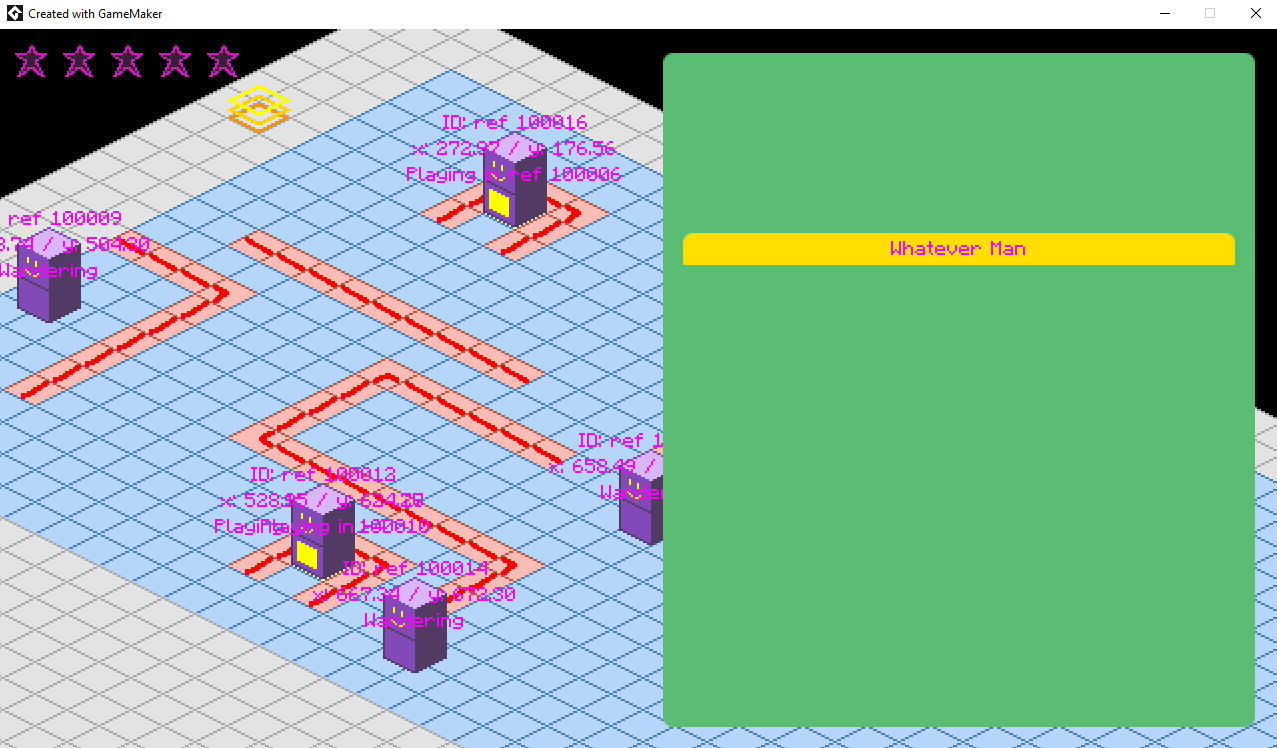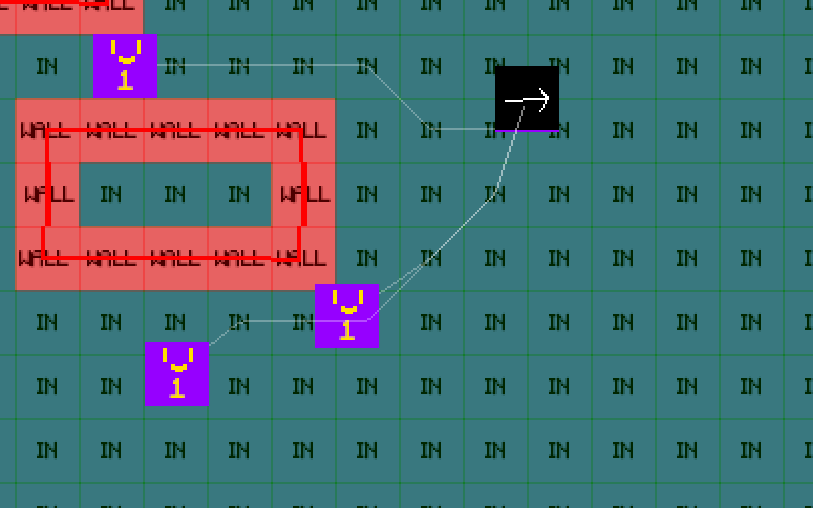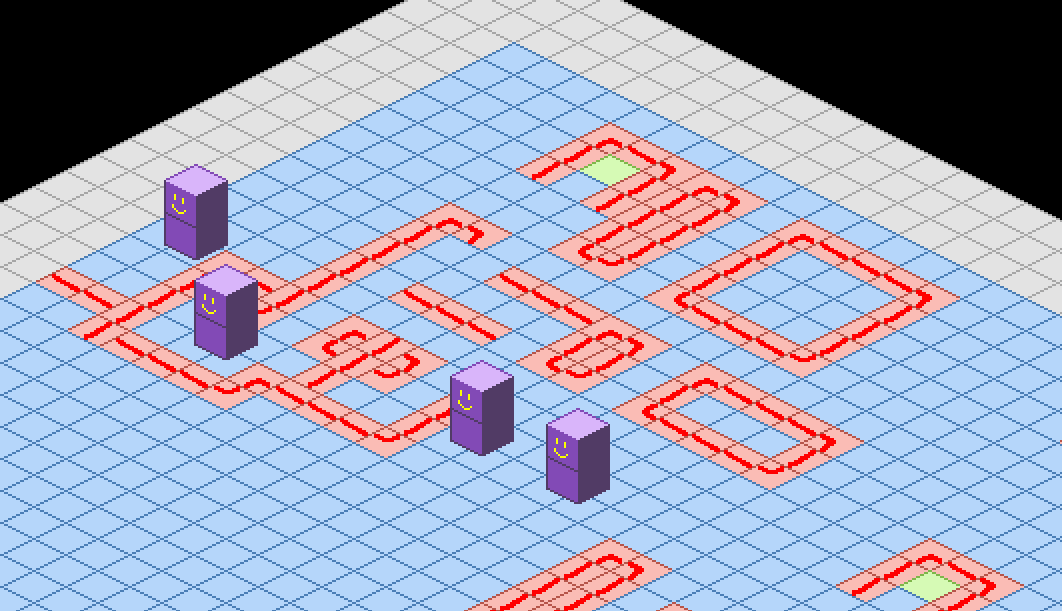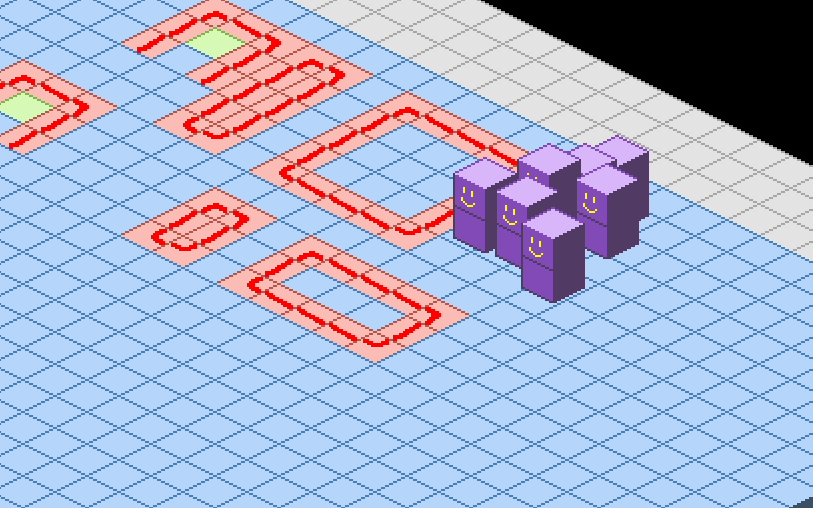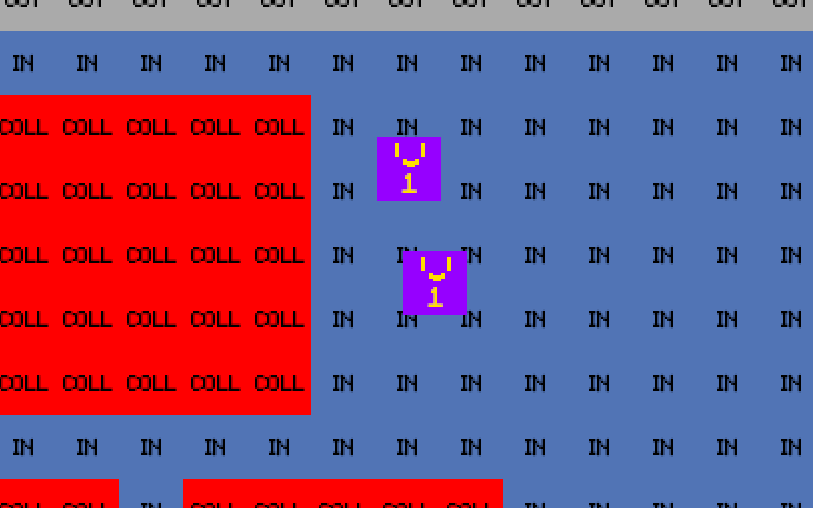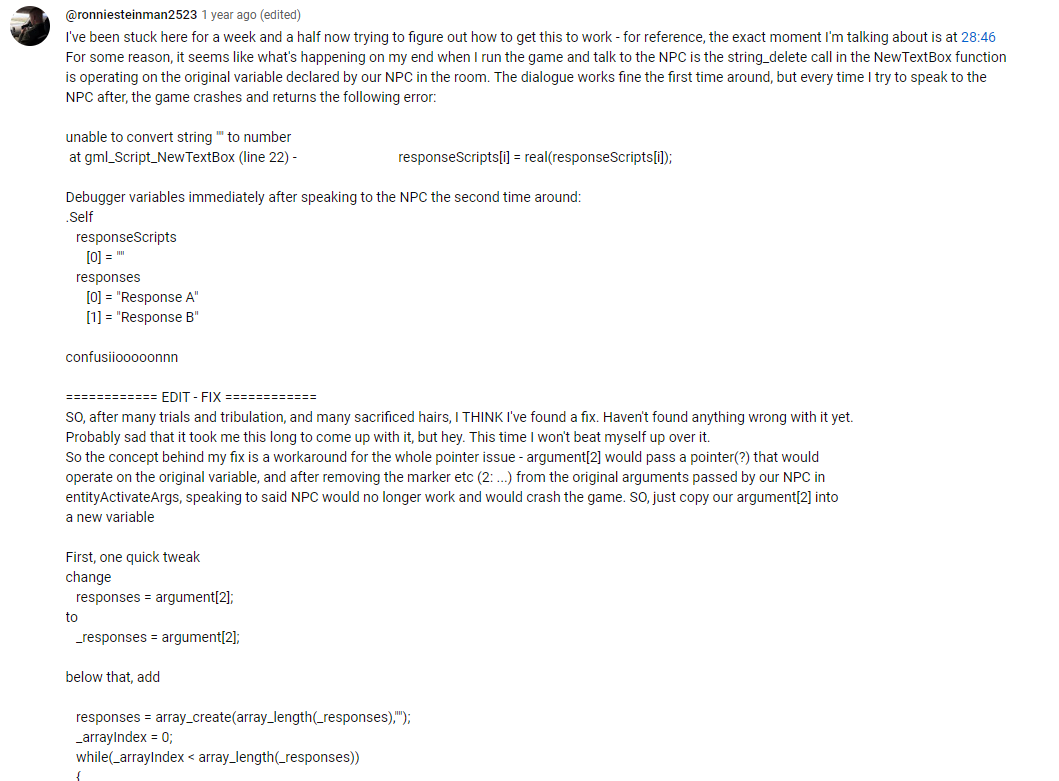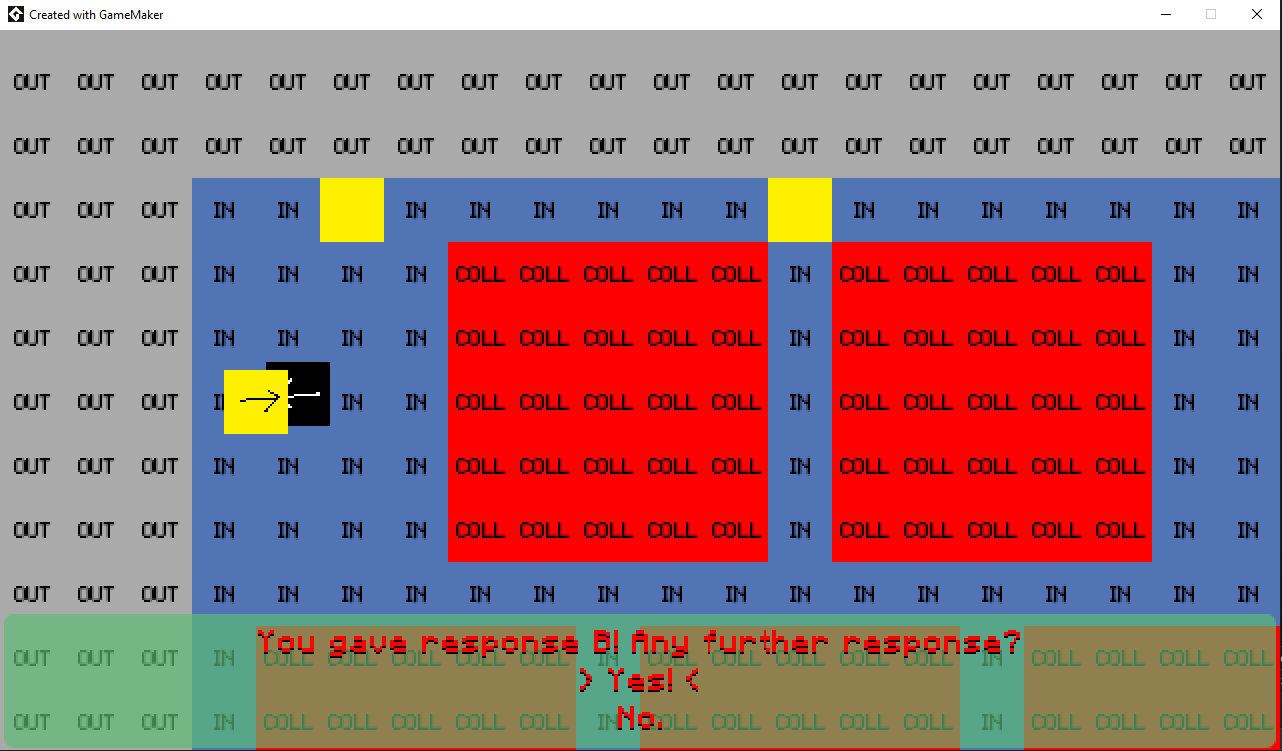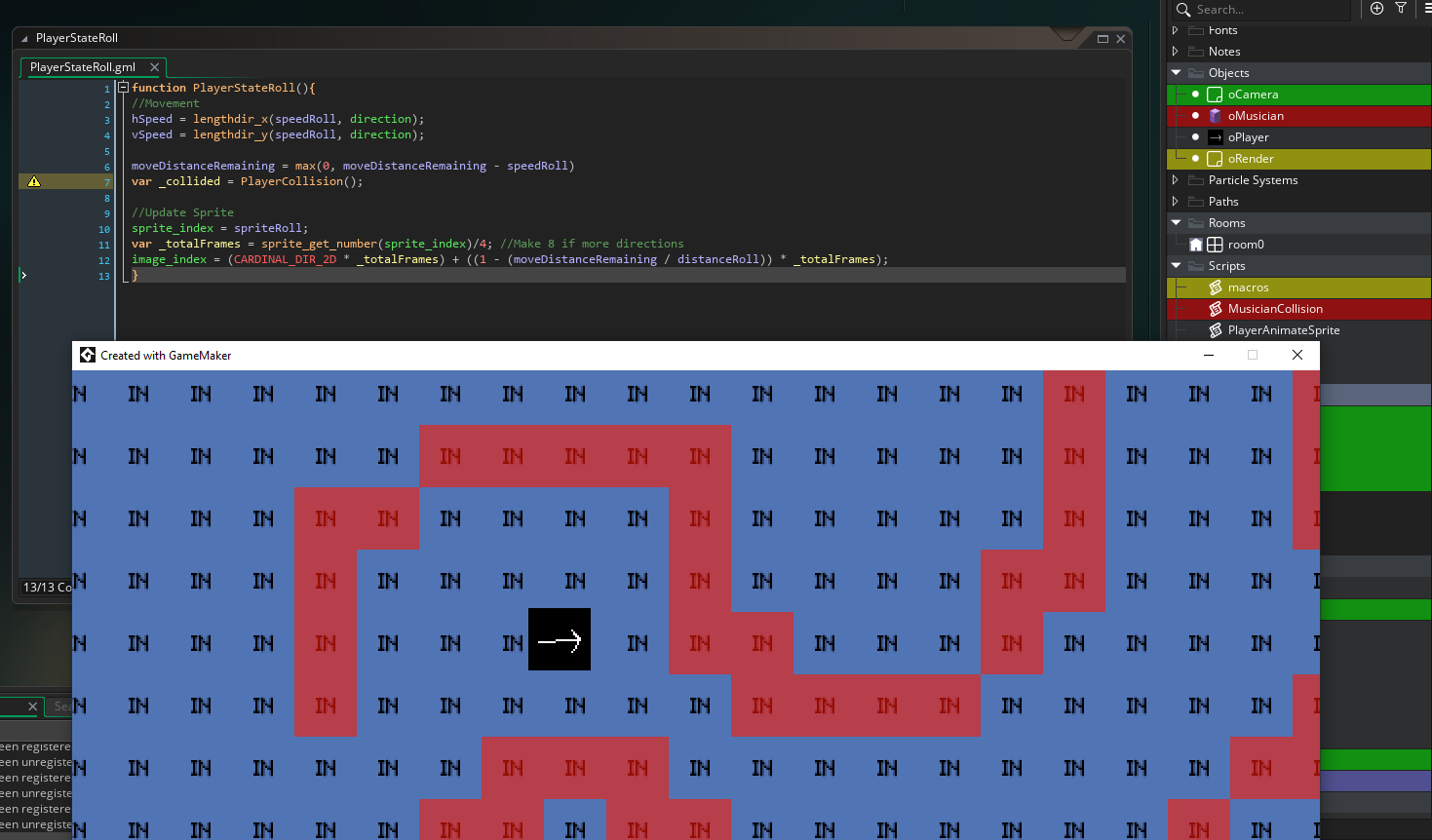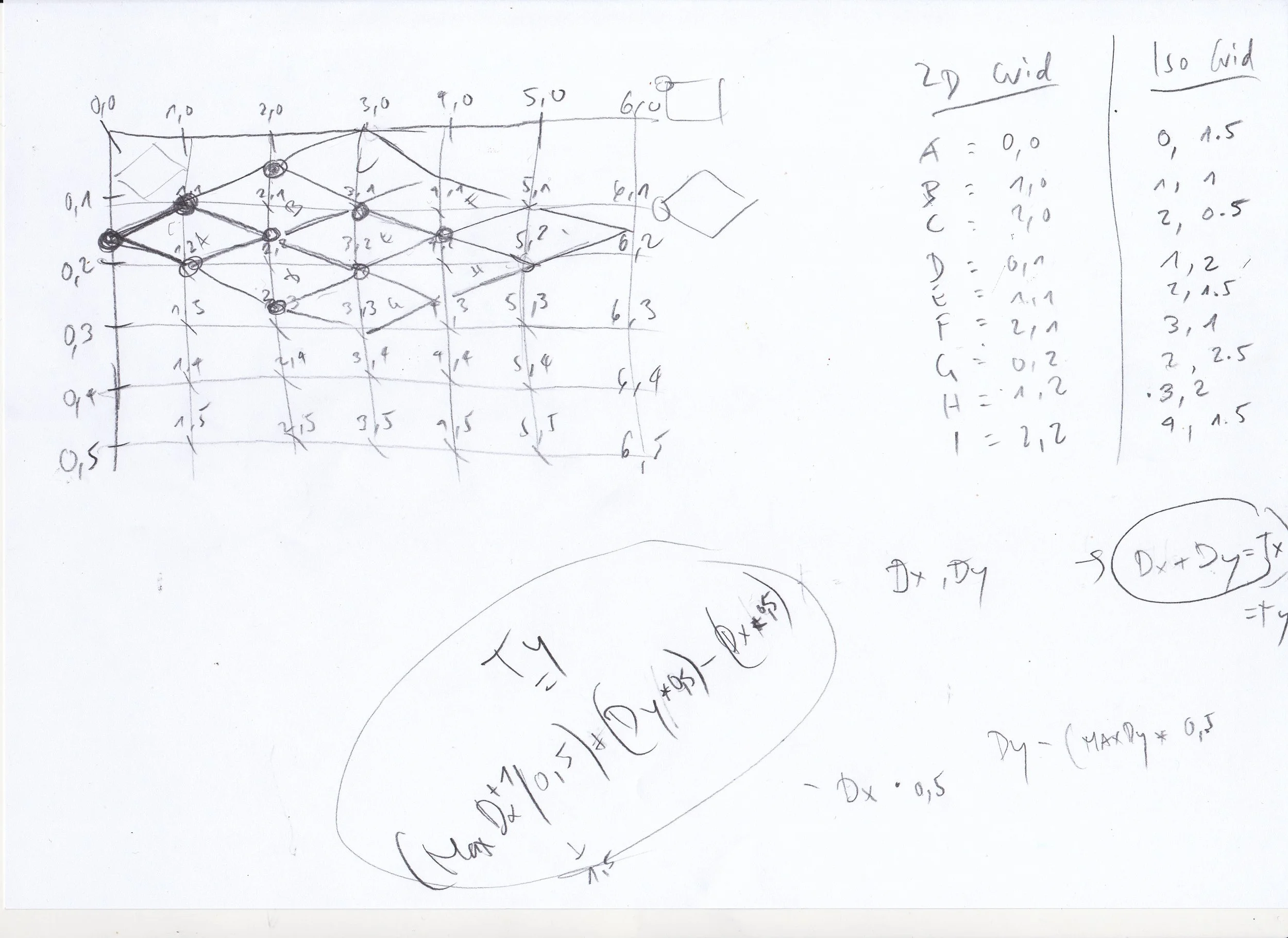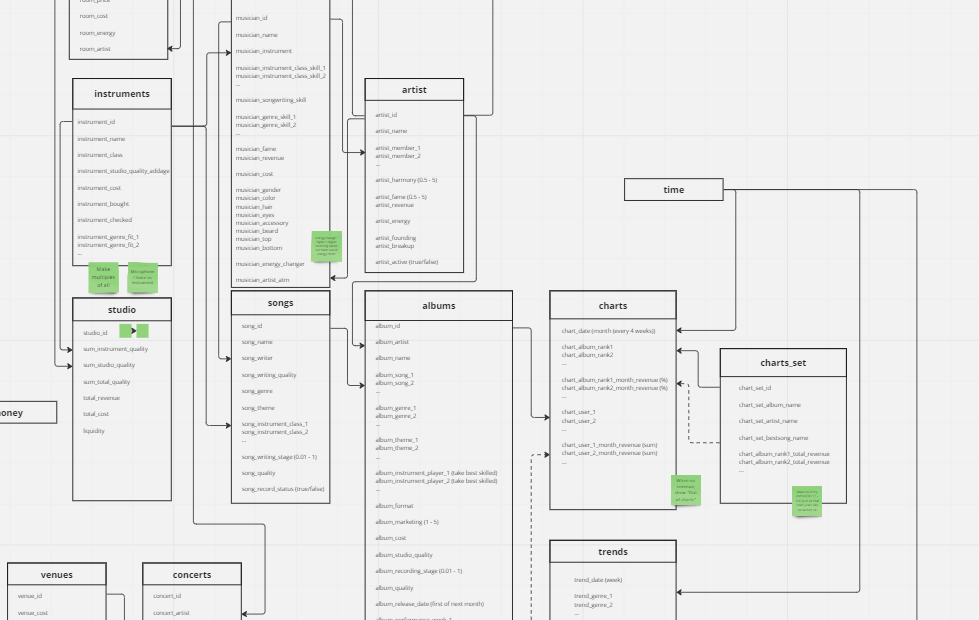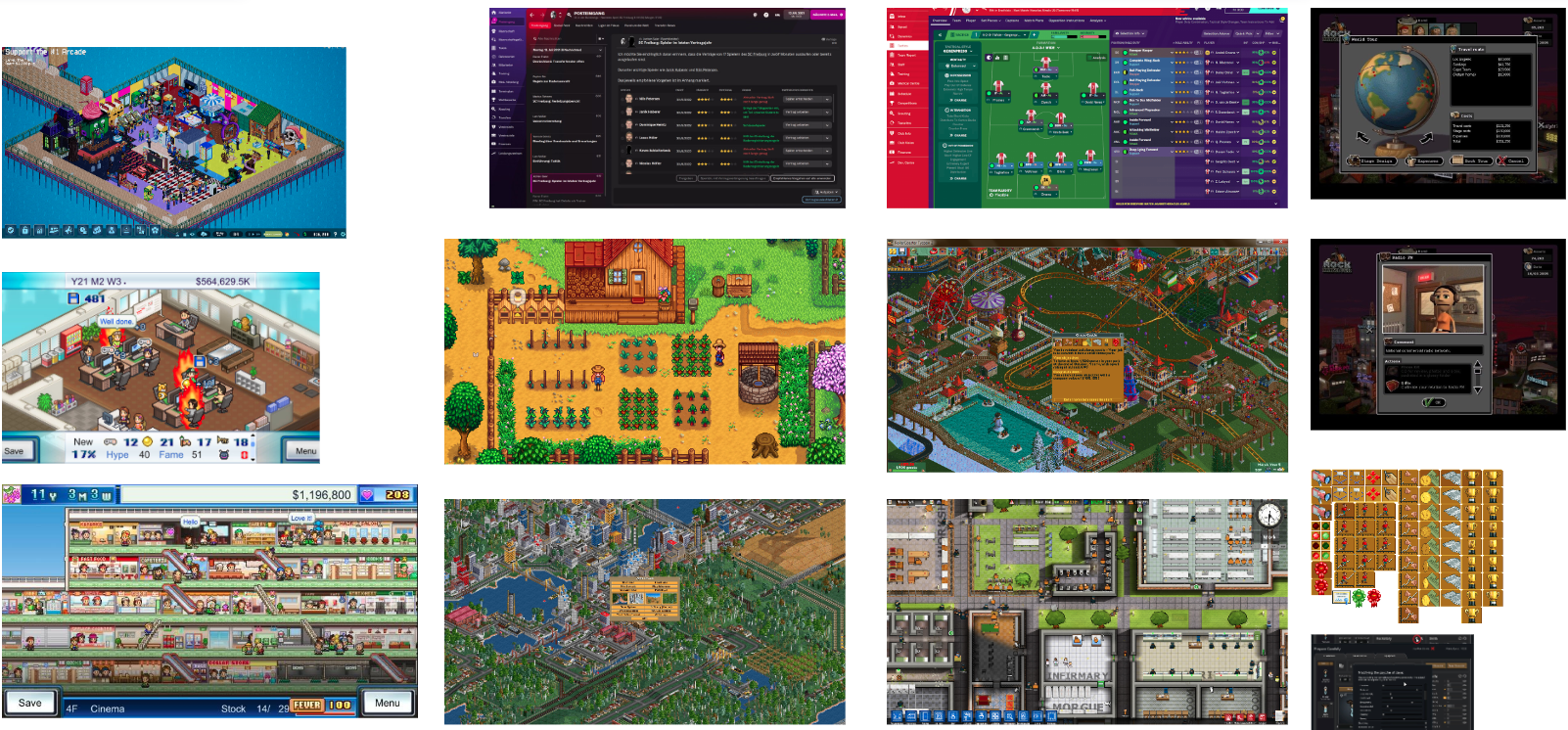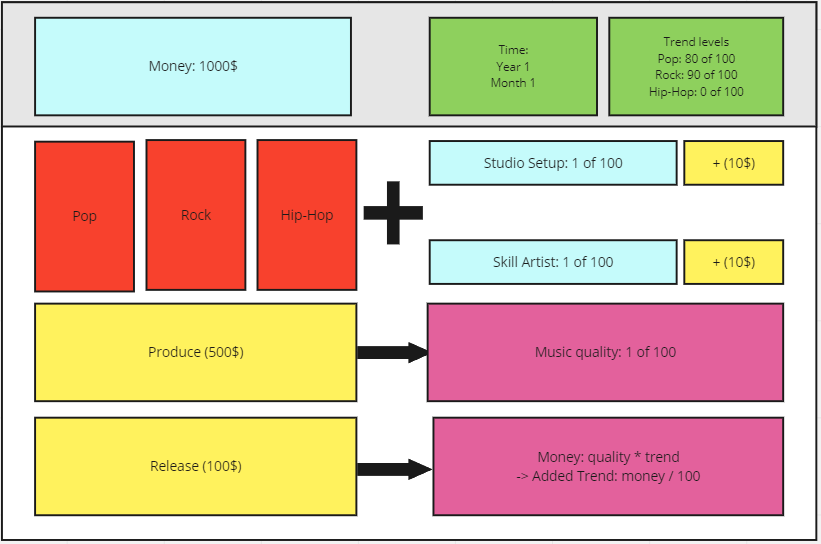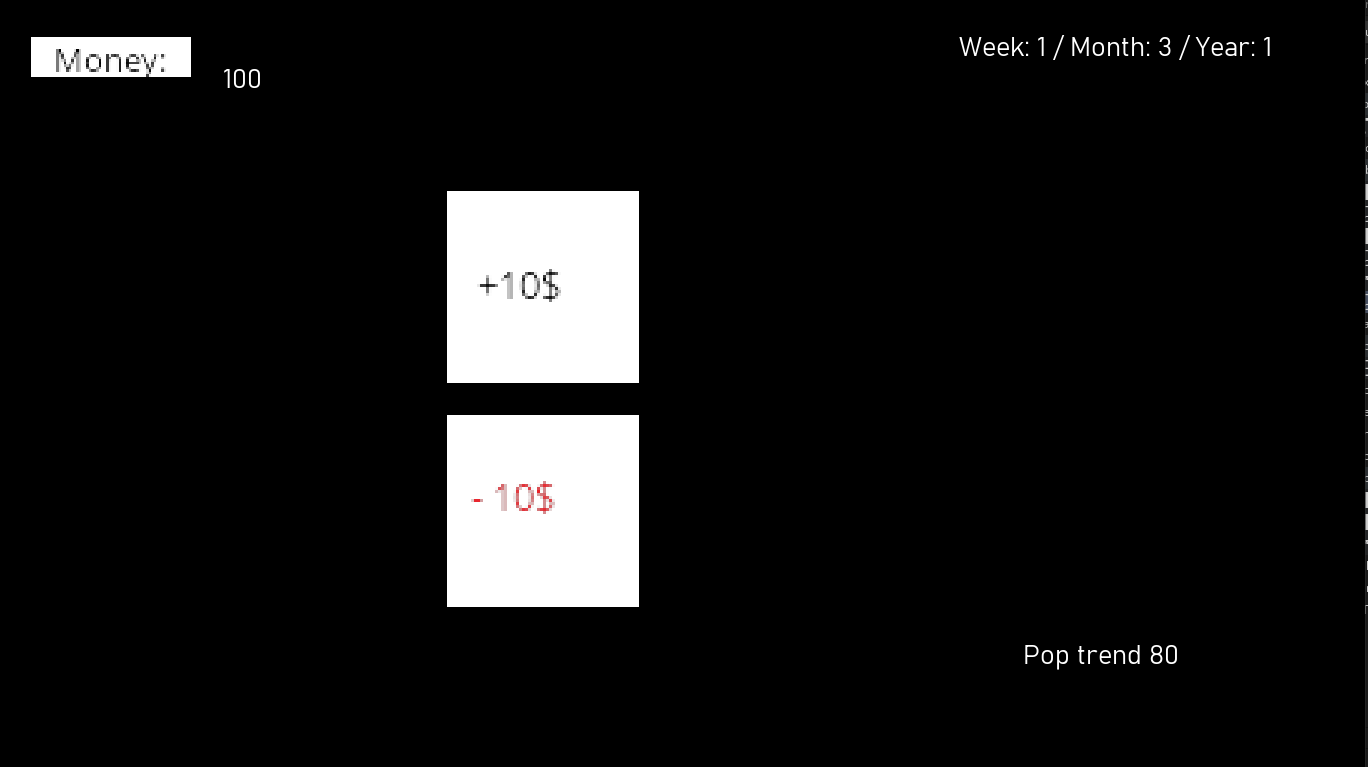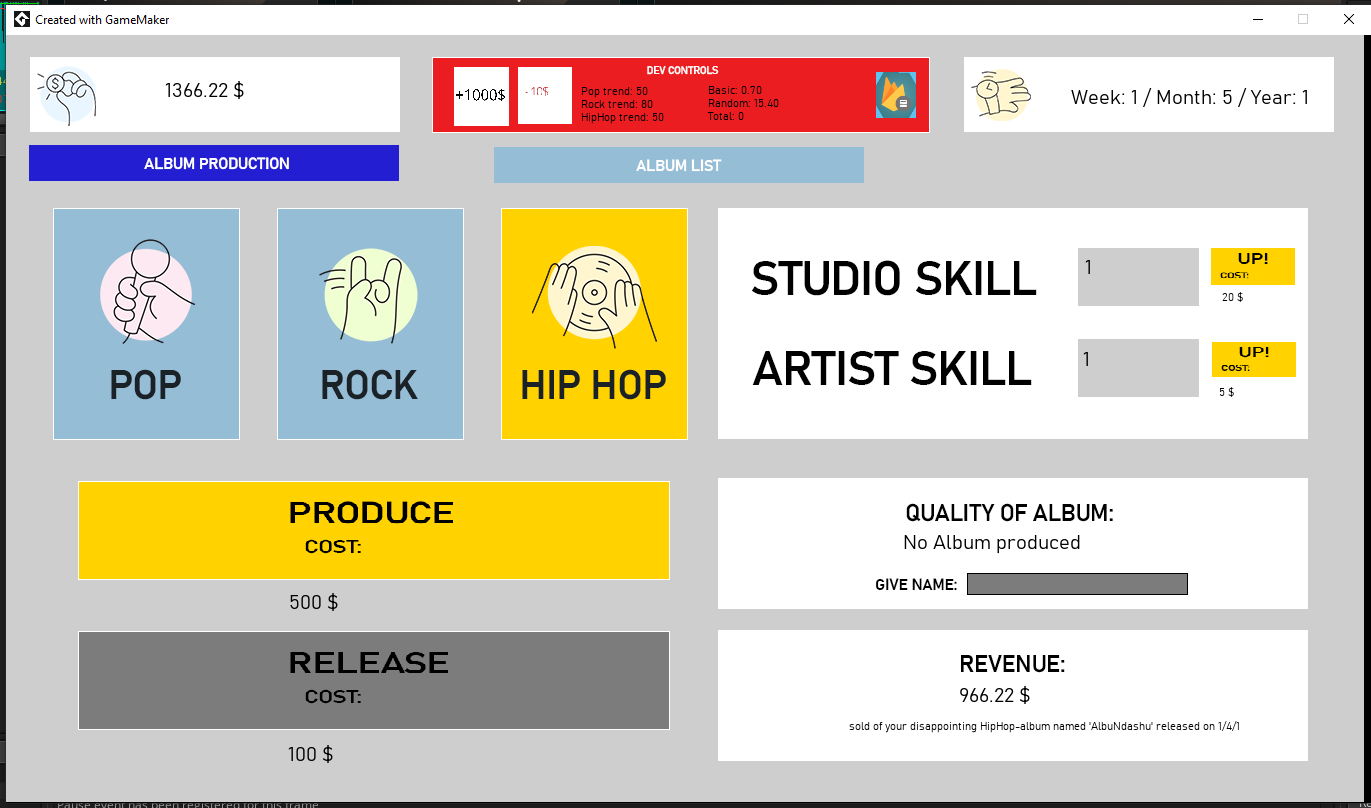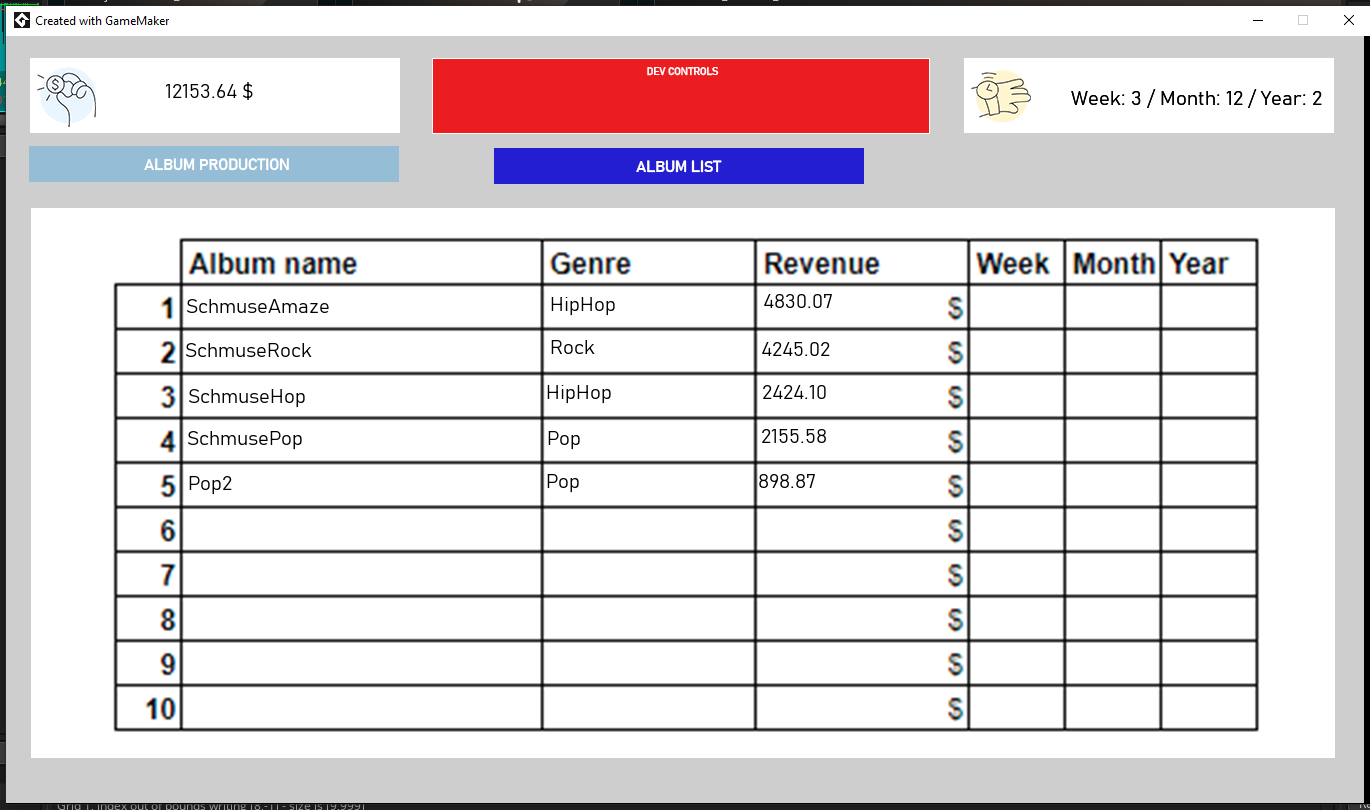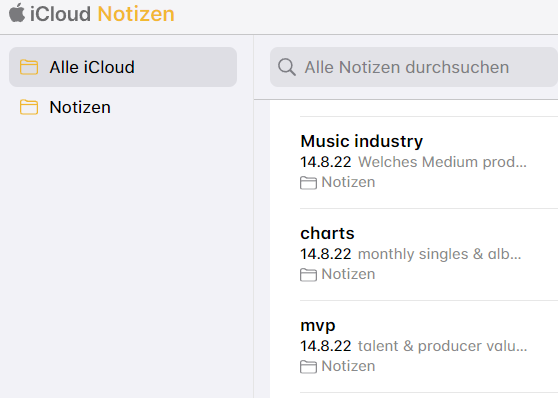That’s when I decided to go for pixel art and the isometric perspective. I knew instinctively, that the isometric perspective would make things a bit harder, but I really liked the look. I also didn’t want my game to be a kinda Stardew Valley-clone, as there are too many like it in our time. Stardew Valley is still very much popular today and attracts copycats, while the other simulation games I adore - like SimCity 4 (2003) , Rollercoaster Tycoon (1999) or the Kairosoft Games -, aren’t part of the mainstream collective consciousness anymore. The first two of my examples have gotten (literal and spiritual) successors in 3D. I do like those games as well, like Frontier’s Planet Zoo (2019) & Planet Coaster (2016) or Colossal Order’s Cities: Skylines (2015), but 3D seemed daunting to me and often a lot of charm goes missing when making games like these in 3D.
For the gameplay concept I analysed some of the simulation games I liked (Rollercoaster Tycoon, The Movies, SimCity 4, Stardew Valley and Rimworld) and what connected them. I came up with the following things:
Personalisation of a space: in all games you control some of the gameplay by building out the map / layout of a space that’s yours in the way that you want (your studio, your park, your city, your farm, etc.).
Milestone goals: something I didn’t think alot about in my unstructured musings about my game, was the need for milestone goals. In Rollercoaster Tycoon it’s scenario goals, in The Movies it’s awards at the end of the year, in Stardew Valley you have the Community Center and in Rimworld you got the goal of leaving the planet. I feel like this is all about measurable progression. It’s not enough that your financial standing just goes up or the quality of your work becomes better: you get a hit of dopamin when you reach a specific goal. This motivates people to go from one step to the next and keep on playing.
Potential endlessness: while there are goals (see last point), all these games can be played beyond the set goals. You can set your own goals and just keep playing.
Juggling different tasks: I really don’t like Clicker / Idle games. They are barely games. The thing that makes simulation games engaging and let you go into Flow while playing them is, that as the game (and its difficulty) progresses, you start juggling more and more tasks and complexity. That’s the fun challenge of it. So the game can’t just be about getting more money. You need to keep different kinds of needs in balance. For SimCity it’s zones, the budget, pollution, traffic, etc. For Rimworld it’s characters moods, oncoming enemies, the expiration dates of foods, electricity, etc. There are different values that you have an influence on through your actions that you try to keep high or low, or in balance in some way. As long as you start with not that many, they can (and should) rise to a bigger number over time (-> learning curve).
The possibility of planning: sure, you could play these games without planning your next steps, but if you do, you probably fail. Whenever I played chess, I always only focused on the next steps and didn’t really have a plan. That’s why I suck at chess. But in simulation games I have constantly a list of tasks in my head, that I want to do next. These games all have different kind of actions that you can do at any time, so that you have to make up the plan yourself as you go along. You act, and not just react (as in a lot of other games). This development and planning over time is motivated generally by some sort of progression (unlocking of new rollercoaster types, genres, building types, the next season coming up, a tech tree, or whatever)
Automation: even in games like Stardew Valley, that are all about the zen of playing the game at your own pace, there is automation. The reason for it is, that some tasks become cumbersome after a certain point. For Stardew Valley it’s watering your crops. You start doing them manually and after a certain point in your progression you get sprinklers. In Rollercoaster Tycoon, Rimworld or SimCity, most things are automated by default: you don’t build the buildings yourself in SimCity, you just do the zoning; in Rimworld you give your people a schedule, but they walk to the tasks themselves, etc. As a manager (or tycoon), as your venture gets bigger, you want to be able to give away the smaller tasks to the program (even if that costs you some efficiency).
Then there were some aspects that were specifically charming about certain games. For The Movies it was its commentary and connection to the real world (timeline), for SimCity its great easy listening music, for Stardew Valley its fun characters and cute object sprites and for Rimworld a good pinch of randomness.
So these aspects informed me on what my game needs to include for it to “feel” the way I want it to feel (like the games that I love).





